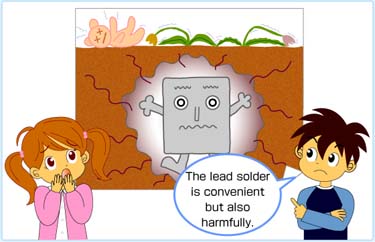 It started, as so many great technical writing projects do, with a misunderstanding. My first day at a new job at a medical device firm, and everyone’s talking about… rowhouse requirements?
It started, as so many great technical writing projects do, with a misunderstanding. My first day at a new job at a medical device firm, and everyone’s talking about… rowhouse requirements?

Allowing non-technical writers to document RoHS mitigation is convenient but also harmfully.
No, that would be RoHS, often pronounced “Ro-haas,” as in Restriction of Hazardous Substances. The European Union passed this law in order to reduce the quantities of certain chemicals commonly found in electronic equipment (hello, medical device hardware!). RoHS addresses six chemicals that can accumulate in soil and water after the equipment gets old and trashed. There’s lead…
… along with mercury, cadmium, hexavalent chromium, polybrominated biphenyls, and polybrominated diphenyl ethers. But lead is the most common culprit, not to mention the easiest to spell.
As a medical device guy, I had worked for years on risk management, something that may seem lightyears away from technical writing, but actually lives right next door. We know how to assess the severity, likelihood, and detectability of hazards that can harm patients (will the device accidentally inject the patient with wombat spit?) or operators (will the device swallow the doctor’s hand like Audrey II?). But RoHS is a different sort of wombat: The risk isn’t to the patient or doctor, but rather to future generations.
The first step was to assign categories of risk. Our device had somewhere north of four hundred components to consider; we assessed each component’s risk according to its complexity, the extent of our control over its manufacture, the length of the supply chain, and so on. For example, a small circuit board assembled in our own factory would be lower risk than a large, sealed power supply purchased through a distributor.
For low-risk items that we purchased off the shelf, we just had to get a self-declaration from the manufacturer that their component was RoHS-compliant. Higher risk items required some level of testing, up to and including this really cool XRF gun (X-Ray Fluorescence) that identifies the element that it’s pointing at.
Here comes the technical writing component. For RoHS compliance, you’ll need to document the criteria that you choose for risk assessments, the resulting categories assigned to various components, the reams of self-declarations, the test protocols and reports, changes to all of those component specifications… You can kill a lot of trees protecting the environment, believe me.
Just to be clear, in the world of medical devices, none of this is called “technical writing.” This is RAQA, that is to say, Regulatory Affairs (making sure that you follow the regulations) and Quality Assurance (making sure that you have a coherent quality system). But as I wrote about auditing, the skills that you need for this kind of regulatory work are straight out of Tech Writing 101. Have fun out there, and as they say in the rowhouse – get the lead out.